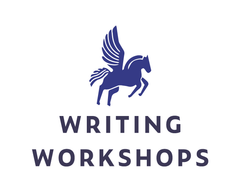by Writing Workshops Staff
A year ago
It’s moody late-October, and the season’s graphic shifts are visible everywhere outdoors. Wherever you live, it’s likely your moods are changing, and memories are bubbling up to the surface as you see the signs of autumn in your habitat. Perhaps your neighbors have put fat pumpkins, skeletons, and hay bales on their front steps. You notice it’s growing light later in the morning, dark sooner at the end of the day. Poets, novelists, and prose writers are moved to describe the experience of autumn in their own words, as those of the great Russian novelist, Leo Tolstoy:
“... the extraordinary autumn weather that always comes as a surprise, when the sun hangs low and gives more heat than in spring, when everything shines so brightly in the rare clear atmosphere that the eyes smart, when the lungs are strengthened and refreshed by inhaling the aromatic autumn air, when even the nights are warm, and when in those dark warm nights, golden stars startle and delight us continually by falling from the sky.”
― Leo Tolstoy, War and Peace
How would you describe your autumn, the one you’re living in now? What’s your weather like? What memories and moods are arising in you inspired by morning mists, changing light, and falling leaves? In Tolstoy’s description of a Russian autumn, we can’t see the picture he was writing from. But we can experience it, visualize it, and emotionally connect to it through his word craft.
He writes about being surprised, startled, strengthened and refreshed, heated by the low sun, and delighted by the falling stars. He writes so that we, too, can imagine—recognize even—the splendor of autumn. We’ve seen these sights, felt these feelings ourselves; they are universally shared.
While Tolstoy’s mood is hearty, we’ve probably also felt the kind of melancholy and loss William Shakespeare describes in his poignant Sonnet 73 in which the yellow leaves portend an end of life that sparks an expression of profound love:
That time of year thou mayst in me behold
When yellow leaves, or none, or few, do hang
Upon those boughs which shake against the cold,
Bare ruin’d choirs, where late the sweet birds sang.
In me thou see’ st the twilight of such day...
Whether or not you’re experiencing a brilliantly unfolding, energetic fall this year or a more melancholy one, you likely have a photo on your photostream, in an album, or on a wall which captures an exquisite autumn scene, caught in the swiftly vanishing moment. Memories and feelings are tugging at your unconscious. Perhaps you remember a moment of first love or free play or best friendship.
I want to encourage you to write from one of your fall photographs. Your task is to capture the mood and setting, express the feelings and reflections, wishes and realities pictured in your photo so that your reader can experience them too. And, as you do so, you will be surprised at what you know and haven’t said.
When you have chosen your picture, open your notebook and begin writing. Imagine you’re writing a letter to a childhood best friend who is living far away and not able to see the landscape you’re living in this autumn. This friend may be a sibling, a cousin—anyone special from your past, living or dead, or even imaginary.
-
Look with fresh eyes at your photo, and you’ll see what you have not seen before. Remember, you cannot show the reader this picture; you can only tell them about it. Where is this place? Describe every detail. Trust that everything was placed in this photo for a reason. Engage with the meaning of each element.
-
Imagine you are stepping into the world and time of this photo. Write from your senses. What sounds, smells, and tastes emanate from inside this three-dimensional experience?
-
How does this photo make you feel—physically and emotionally? Disclose all this to your friend. Be specific, noting how these feelings are generated and from which aspect of your photo.
-
Tell your trusted listener why you are writing to them about this fall, this moment in time. What do you wish this special person to know?
Once you’ve written your raw material from your photo, circle what seems to spark—something you want to develop in poetry or prose. Highlight ideas, phrases, symbols, or metaphors you appreciate. Pay attention to the words that make you feel something. It’s likely, if you develop this writing and share it with a trusted reader, they will feel it too.
